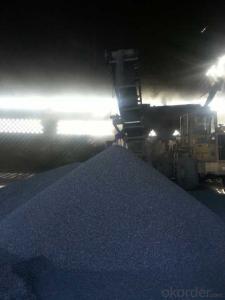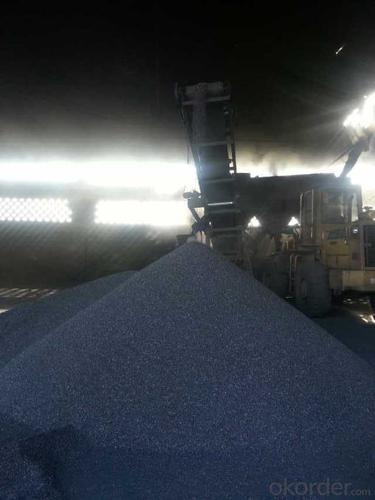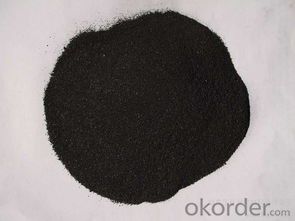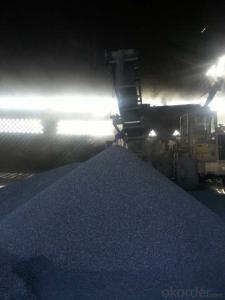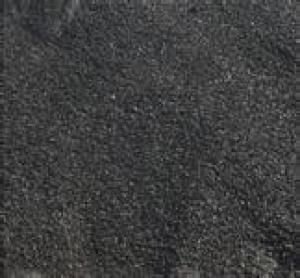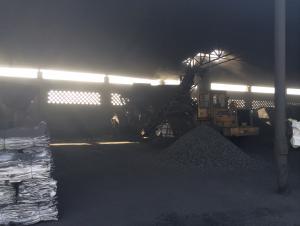FC92 Carbon Additive/CNBM China Carbon Additive
- Loading Port:
- Tianjin
- Payment Terms:
- TT OR LC
- Min Order Qty:
- 0 m.t.
- Supply Capability:
- 100000 m.t./month
OKorder Service Pledge
OKorder Financial Service
You Might Also Like
Product Description
Carbon Additive also called Calcined anthracite Coal, Gas Calcined Anthracite Coal, Carbon Raiser,Recarburizer,etc.
The main raw material of our Carbon Additive is Ningxia unique high quality Taixi anthracite, with characteristic of low ash and low sulfur. Carbon additive has two main usage, fuel and additive. When being used as the carbon additive of steel-smelting, and casting, the fixed carbon may achieve above 95%.
Best quality Taixi anthracite as raw materials through high temperature calcined at 800-1200 ℃ by the DC electric calciner with results in eliminating the moisture and volatile matter from Anthracite efficiently, improving the density and the electric conductivity and strengthening the mechanical strength and anti-oxidation, It has good characteristics with low ash, low resistivity, low carbon and high density. It is the best material for high quality carbon products, it is used as carbon additive in steel industry or fuel.
Packaging & Delivery
| Packaging Detail: | 25kgs/50kgs/1ton per bag or as buyer's request |
| Delivery Detail: | Within 20 days |
Specifications
Calcined Anthracite
Fixed carbon: 90%-95%
S: 0.5% max
Size: 0-3. 3-5.3-15 or as request
Calcined Anthracite is produced using the best Anthracite-Taixi Anthracite with low S and P, It is widely used in steel making and casting.
General Specification of Calcined Anthracite:
PARAMETER UNIT GUARANTEE VALUE | |||||
F.C.% | 95MIN | 94MIN | 93MIN | 92MIN | 90MIN |
ASH % | 4MAX | 5MAX | 6MAX | 7MAX | 8MAX |
V.M.% | 1 MAX | 1MAX | 1.5MAX | 1.5MAX | 1.5MAX |
SULFUR % | 0.5MAX | 0.5MAX | 0.5MAX | 0.5MAX | 0.5MAX |
MOISTURE % | 0.5MAX | 0.5MAX | 0.5MAX | 0.5MAX | 0.5MAX |
Size can be adjusted based on buyer's request.
Pictures of Calcined Anthracite:
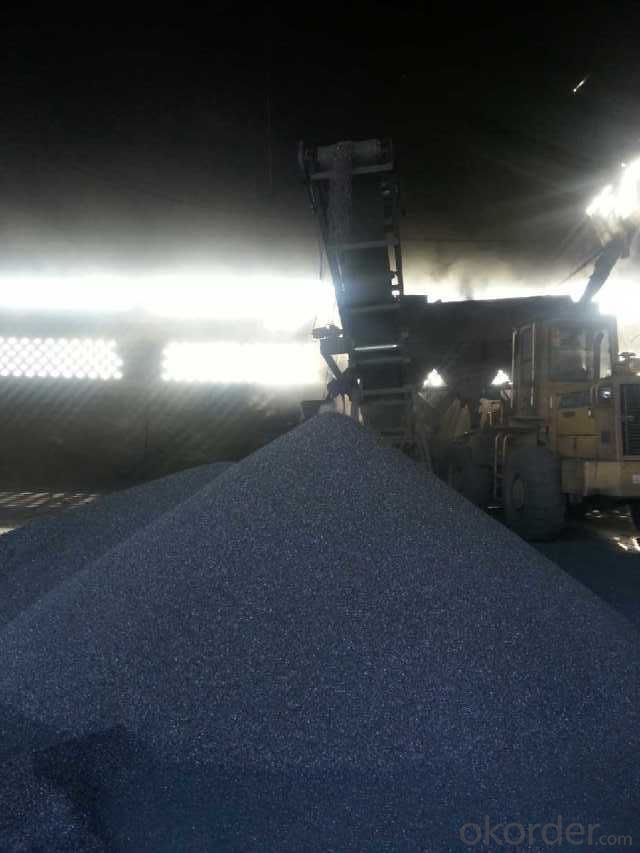
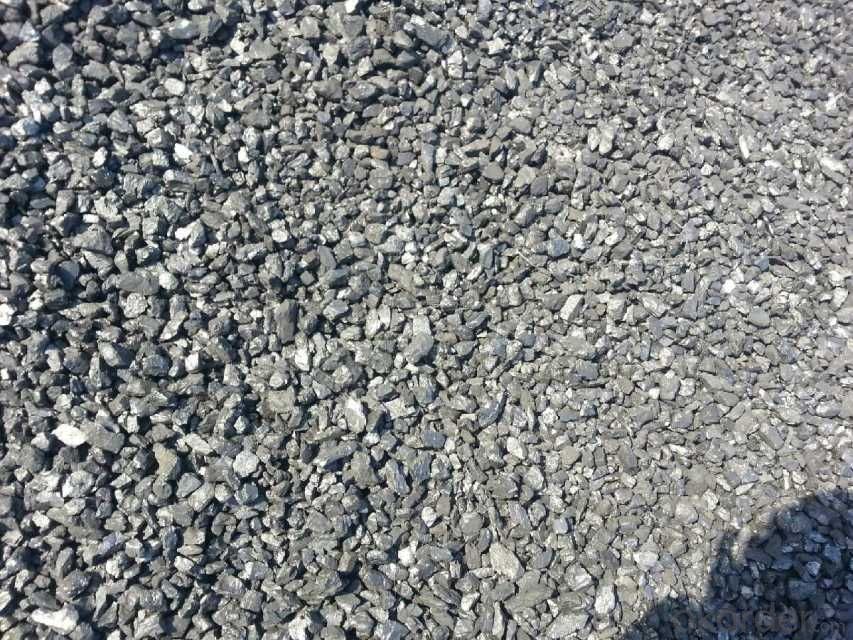
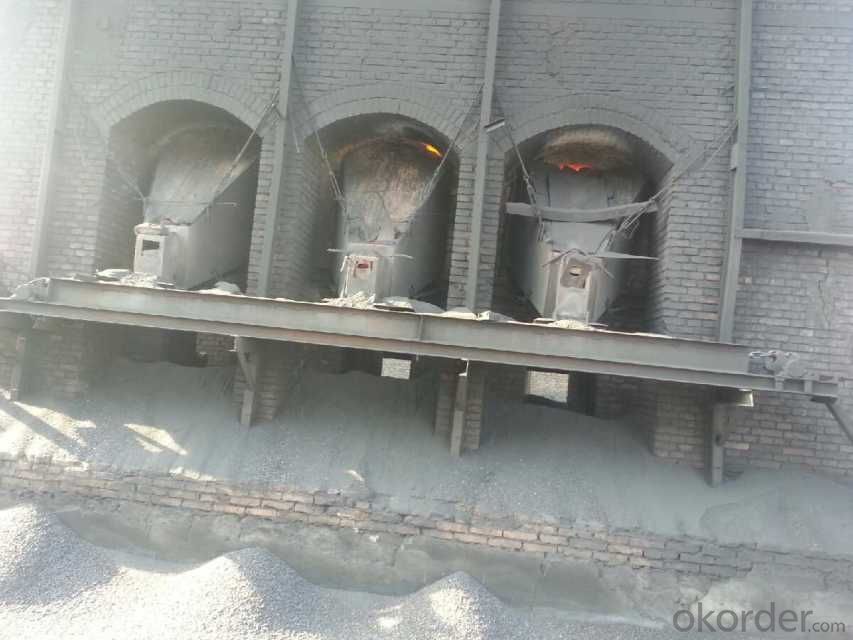
- Q: What is the role of carbonation in carbonated drinks?
- The role of carbonation in carbonated drinks is to provide the refreshing and effervescent sensation that is characteristic of these beverages. Carbonation is the process of dissolving carbon dioxide gas into a liquid, typically water, under pressure. This results in the formation of carbonic acid, which adds a tangy flavor to the drink. Carbonation serves several purposes in carbonated drinks. Firstly, it enhances the taste by adding a unique bubbly sensation that stimulates the taste buds and gives a refreshing mouthfeel. The effervescence created by the carbonation also contributes to the overall sensory experience of the drink, making it more enjoyable to consume. Furthermore, carbonation acts as a natural preservative in carbonated drinks. The carbon dioxide gas inhibits the growth of bacteria and other microorganisms, thereby extending the shelf life of the beverage. This is particularly important for soft drinks that are often stored for extended periods before consumption. In addition to taste and preservation, carbonation plays a role in the presentation of carbonated drinks. The release of carbon dioxide gas from the liquid creates bubbles and fizz, making the drink visually appealing and enticing. This visual appeal is often associated with a feeling of luxury and indulgence. Overall, carbonation is an essential component of carbonated drinks, providing taste, preservation, and visual appeal. It enhances the sensory experience and contributes to the overall enjoyment of these beverages.
- Q: Is graphite carbon?
- They are arranged in eight planes. The net shape is the diamond, which is arranged in a regular hexagon and a layer, and then graphite is formedDiamond and graphite are carbon elements
- Q: How does carbon pricing work?
- Carbon pricing is an approach that utilizes the market to decrease greenhouse gas emissions by placing a value on carbon emissions. This is achieved by assigning a financial cost to the release of carbon dioxide and other greenhouse gases into the atmosphere, which greatly contribute to climate change. There exist two primary forms of carbon pricing mechanisms: carbon taxes and cap-and-trade systems. Under a carbon tax, a fixed price per metric ton of carbon emissions is established, and emitters are obligated to pay this tax according to their emissions. The tax can be imposed at different points in the supply chain, such as during extraction, production, or consumption. The goal of a carbon tax is to create a economic deterrent for emitting carbon and motivate industries and individuals to reduce their emissions. On the other hand, cap-and-trade systems impose a limit or cap on the total amount of carbon emissions permitted within a specific jurisdiction. This cap is divided into allowances, which represent the right to emit a particular amount of carbon. These allowances are either distributed or auctioned to emitters in the form of permits. Emitters can then trade these permits amongst themselves in a market. If an emitter surpasses their allocated allowances, they must purchase additional permits from those who have surplus allowances. This establishes a market-based incentive for emission reduction, as those who can more cost-effectively decrease their emissions can sell their excess allowances to those who are unable to. Both carbon taxes and cap-and-trade systems aim to incorporate the cost of carbon emissions into the economy, making pollution more expensive and encouraging the adoption of cleaner technologies and practices. By assigning a value to carbon, these mechanisms provide economic signals that urge businesses, industries, and individuals to invest in low-carbon alternatives, energy efficiency, and innovation. Additionally, they generate revenue for governments, which can be utilized to fund efforts in climate change mitigation and adaptation, renewable energy projects, or to reduce other taxes. Overall, carbon pricing mechanisms are designed to establish economic incentives for reducing greenhouse gas emissions, facilitating the transition to a low-carbon economy, and mitigating climate change. While they may not be a perfect solution, they are widely acknowledged as one of the most effective tools for driving emission reductions and combating climate change.
- Q: Excuse me, carbon steel, carbon steel pipe, seamless steel pipe, spiral steel pipe, what is the difference?
- According to the appearance shape are distinguished; the so-called carbon steel pipe; welded steel pipe should be called and said seam tube material, ordinary carbon steel, the whole tube has a longitudinal seam, by forming a so called drawing strip heating tube. Carbon steel plate is composed of ordinary carbon steel plate; a winding connection of a suitable low temperature and low pressure carbon steel plate which is called muons. Seamless steel tube is made by heating the tube blank.
- Q: How is carbon stored in the Earth's crust?
- Various forms of carbon are stored in the Earth's crust through different geological processes. One primary method of storage involves the creation of sedimentary rocks like limestone, dolomite, and chalk. These rocks consist mainly of calcium carbonate, which comes from the shells and skeletons of marine organisms that existed millions of years ago. As time passes, these remains gather on the ocean floor and become compressed and cemented, effectively trapping carbon within them. Another way carbon is stored in the Earth's crust is through carbonation. Carbon dioxide (CO2) from the atmosphere can dissolve in water and react with specific minerals, like basalt, leading to the formation of carbonate minerals such as calcite or magnesite. This natural process occurs through chemical weathering and volcanic activity, aiding in the sequestration of carbon within the Earth's crust. Moreover, organic carbon takes the form of fossil fuels, including coal, oil, and natural gas. These fuels are the remnants of ancient plants and microorganisms that lived and perished millions of years ago. Over time, the organic matter becomes buried and subjected to high pressure and temperature, resulting in a process known as diagenesis, which eventually converts it into fossil fuels. These deposits serve as carbon reservoirs within the Earth's crust. In summary, the Earth's crust acts as a significant carbon sink, efficiently storing carbon through processes such as the formation of sedimentary rocks, carbonation, and the accumulation of fossil fuels. However, it is crucial to note that human activities, particularly the combustion of fossil fuels, are releasing substantial amounts of stored carbon into the atmosphere, contributing to global climate change.
- Q: What is the difference between soil organic matter and soil organic carbon?
- Organic matter is organic matter, but a large part of which is composed of carbon, but carbon content of different organic matter is different, the conversion coefficient is 1.724, most of the organic matter and organic carbon conversion of a mean value is the value.
- Q: What are the consequences of increased carbon emissions on tourism industry?
- The consequences of increased carbon emissions on the tourism industry include the deterioration of natural attractions, such as coral reefs and glaciers, which are major tourist draws. Additionally, extreme weather events and rising sea levels can damage infrastructure and disrupt travel plans. The industry may also face increased regulations and taxes aimed at reducing carbon emissions, leading to higher operational costs for businesses. Overall, the consequences of increased carbon emissions on the tourism industry are detrimental to both the environment and the economy.
- Q: Is badminton all good as carbon or aluminum carbon? Does carbon fiber on the Internet mean total carbon?
- The badminton racket is different in texture. Mainly divided into titanium, carbon, aluminum, carbon fiber, aluminum alloy and pure iron, pure aluminum. Among them, the best material is titanium, followed by carbon, aluminum, carbon fiber, aluminum alloy and pure iron, pure aluminum. Related knowledge: before 70s, the material is almost entirely of wood and steel in the world, in 70s began to use Aluminum Alloy, now the world is completely new materials such as carbon fiber, titanium alloy, high strength carbon fiber and other materials because they are lighter, stronger, more durable and can absorb more vibration and shock, at the same time let the racket maker the hardness of the racket, ball, have more space to play ball on the performance design. When choosing the racket, best to look at this is what a racket made of material, usually in the racket racket rod and a racket frame will be labeled with the material, sometimes is the same as YONEX ISO-800TOUR High Modulus Graphite shot rod (high strength carbon fiber) frame also has the same mark, and some racket racket rod and frame material is not the same as: YONEX ISO-250LONG High Moudulus Graphite shot frame for Graphite (carbon fiber). Some also took pole, beat box made of the same material the labeled All Graphite or All Graphite racket only in a local frame or shaft. Sign formal products are accurate and reliable, and fake products marked is printed, it is generally used in relatively poor carbon cloth, compared the density, purity and regular products so large that the cost is very low.
- Q: How does carbon affect the formation of hurricanes?
- Carbon does not directly affect the formation of hurricanes, as their development is primarily influenced by factors such as warm ocean temperatures, atmospheric instability, and moisture content. However, carbon emissions and climate change can indirectly impact hurricanes by contributing to rising sea levels, which can exacerbate storm surge flooding during a hurricane event. Additionally, some studies suggest that climate change may lead to more intense hurricanes in the future, although the exact relationship between carbon and hurricane intensity is still an active area of research.
- Q: How is carbon used in the production of cosmetics?
- Cosmetics utilize carbon in diverse ways during their production. A prevalent application of carbon in cosmetics involves its use as a coloring agent. Carbon black, a specific form of carbon, imparts a deep black hue to numerous cosmetic products such as eyeliners, mascaras, and eyeshadows. Nail polishes and lipsticks also incorporate carbon as a colorant. Furthermore, carbon finds application in the creation of activated charcoal, which has gained popularity due to its detoxifying properties. Derived from carbon, activated charcoal features prominently in skincare products like face masks, cleansers, and scrubs. Its ability to absorb excess oil and impurities from the skin makes it a favored ingredient for products targeting oily and acne-prone skin. Moreover, carbon contributes to the manufacturing of exfoliating products. Tiny particles known as microbeads, utilized in facial scrubs and body washes to eliminate dead skin cells, can be crafted from carbon. These microbeads gently exfoliate the skin, leaving it rejuvenated and smooth. Additionally, carbon plays a role in the production of certain cosmetic base materials. Emollients, crucial substances that moisturize and soften the skin, rely on carbon as an essential component. Creams, lotions, and lip balms commonly contain emollients, which enhance their hydrating properties. To summarize, carbon assumes a vital role in cosmetic production. Its versatility as an ingredient contributes to the aesthetics and functionality of various cosmetic formulations, ranging from providing color to enhancing the efficacy of skincare products.
Send your message to us
FC92 Carbon Additive/CNBM China Carbon Additive
- Loading Port:
- Tianjin
- Payment Terms:
- TT OR LC
- Min Order Qty:
- 0 m.t.
- Supply Capability:
- 100000 m.t./month
OKorder Service Pledge
OKorder Financial Service
Similar products
Hot products
Hot Searches
